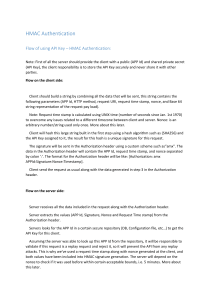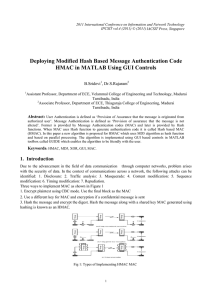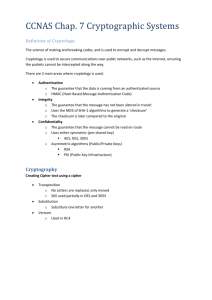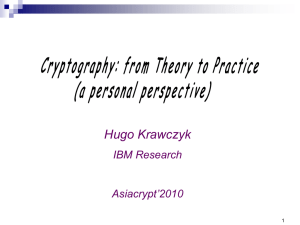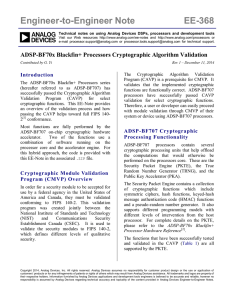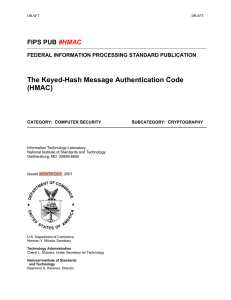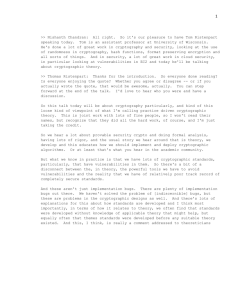2.11 For Signers: When using an HMAC, truncate the output to
advertisement
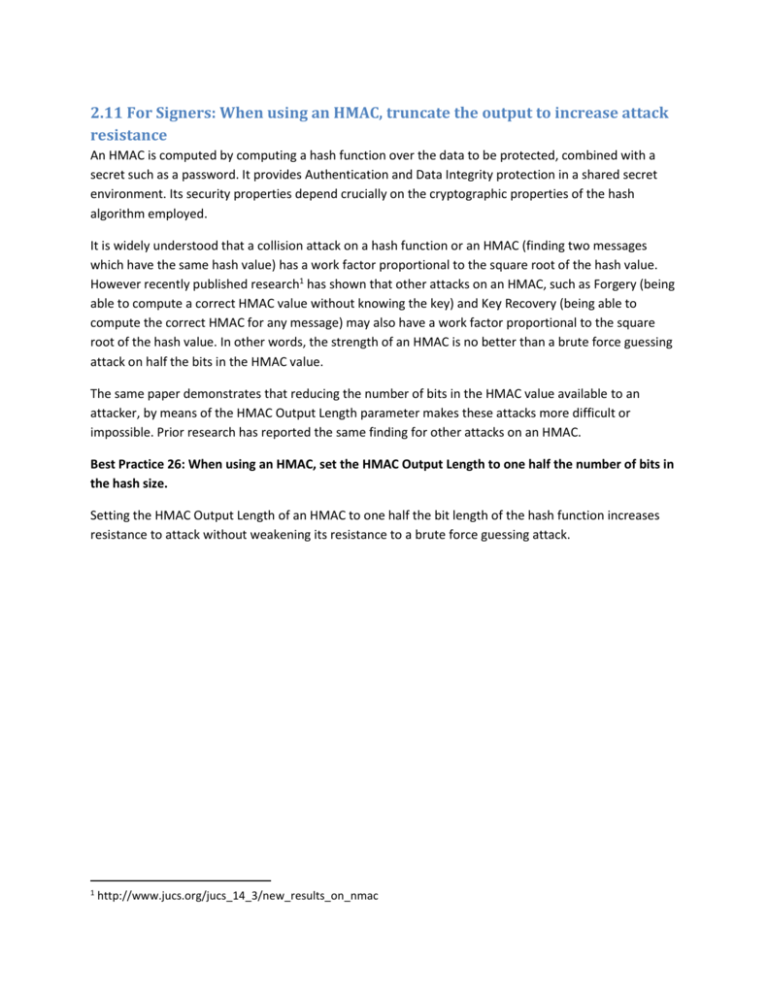
2.11 For Signers: When using an HMAC, truncate the output to increase attack resistance An HMAC is computed by computing a hash function over the data to be protected, combined with a secret such as a password. It provides Authentication and Data Integrity protection in a shared secret environment. Its security properties depend crucially on the cryptographic properties of the hash algorithm employed. It is widely understood that a collision attack on a hash function or an HMAC (finding two messages which have the same hash value) has a work factor proportional to the square root of the hash value. However recently published research1 has shown that other attacks on an HMAC, such as Forgery (being able to compute a correct HMAC value without knowing the key) and Key Recovery (being able to compute the correct HMAC for any message) may also have a work factor proportional to the square root of the hash value. In other words, the strength of an HMAC is no better than a brute force guessing attack on half the bits in the HMAC value. The same paper demonstrates that reducing the number of bits in the HMAC value available to an attacker, by means of the HMAC Output Length parameter makes these attacks more difficult or impossible. Prior research has reported the same finding for other attacks on an HMAC. Best Practice 26: When using an HMAC, set the HMAC Output Length to one half the number of bits in the hash size. Setting the HMAC Output Length of an HMAC to one half the bit length of the hash function increases resistance to attack without weakening its resistance to a brute force guessing attack. 1 http://www.jucs.org/jucs_14_3/new_results_on_nmac

